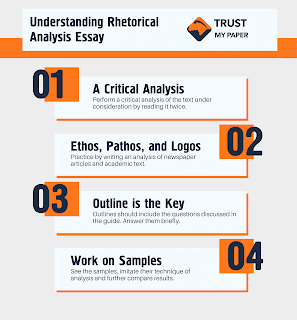Rhetorical Analysis Examples: Mastering the Art of Persuasion
When it comes to persuasive writing and public speaking, rhetorical analysis plays a vital role in understanding and effectively captivating an audience. By dissecting the techniques and strategies used by renowned speakers and writers, individuals can gain valuable insights into the art of persuasion. In this article, we will explore a few remarkable rhetorical analysis examples that demonstrate the power of rhetorical devices and how they can be used to convey a compelling message.
Example 1: Martin Luther King Jr.'s "I Have a Dream" Speech
Martin Luther King Jr.'s famous speech delivered during the March on Washington in 1963 remains one of the most influential pieces of oratory in American history. Throughout his speech, King masterfully employs rhetorical devices such as metaphors, repetition, and parallelism to convey his vision for racial equality and justice. For instance, the recurring phrase "I have a dream" creates a powerful and hopeful image of a better future, while his use of parallel structure in the line "Now is the time to make justice a reality for all of God's children" emphasizes the urgency and universality of his message.
Example 2: Winston Churchill's "We Shall Fight on the Beaches" Speech
Winston Churchill, the Prime Minister of the United Kingdom during World War II, delivered a memorable speech to the House of Commons in 1940 amidst the threat of invasion by Nazi Germany. Through the skillful use of rhetorical devices such as anaphora ("We shall fight"), antithesis ("we shall never surrender"), and emotive language, Churchill rallied the British people and instilled in them a sense of defiance and determination. His speech demonstrates how the strategic use of rhetorical devices can inspire collective action and unite a nation in times of crisis.
Example 3: Maya Angelou's "On the Pulse of Morning" Poem
Maya Angelou's poem "On the Pulse of Morning," delivered at the 1993 presidential inauguration of Bill Clinton, is a remarkable example of the evocative power of language. Through vivid imagery, metaphors, and rhythmic patterns, Angelou eloquently addresses themes of unity, hope, and change. The repetition of phrases like "lift up your eyes upon the day breaking for you" not only reinforces her message but also creates a sense of inclusivity and shared responsibility. Angelou's poetic masterpiece showcases how rhetorical analysis transcends traditional forms of communication and can be applied to various art forms.
Example 4: Steve Jobs' iPhone Launch Presentation
Steve Jobs, co-founder of Apple Inc., was renowned for his captivating product presentations. In his famous iPhone launch presentation in 2007, Jobs meticulously employed rhetorical techniques to convince the audience of the groundbreaking features and benefits of the iPhone. By utilizing phrases such as "revolutionary," "magical," and "this changes everything," Jobs created an aura of excitement and anticipation. Additionally, his use of vivid demonstrations and concise storytelling further enhanced the persuasive impact of his speech. This example illustrates how rhetorical analysis can be applied to modern technological communication and marketing strategies.
In conclusion, these examples provide a glimpse into the world of rhetorical analysis and its significance in persuasive communication. Whether it is through speeches, poems, or product presentations, the art of persuasion relies on the effective utilization of rhetorical devices. By analyzing and understanding these techniques, individuals can sharpen their own persuasive skills and captivate audiences with their words. So, embrace the power of rhetoric and embark on a journey to master the art of persuasion!




No comments:
Post a Comment